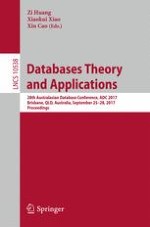This book constitutes the refereed proceedings of the 28th Australasian Database Conference, ADC 2017, held in Brisbane, QLD, Australia, in September 2017.
The 20 full papers presented together with 2 demo papers were carefully reviewed and selected from 32 submissions. The mission of ADC is to share novel research solutions to problems of today’s information society that fulfill the needs of heterogeneous applications and environments and to identify new issues and directions for future research and development work. The topics of the presented papers are related to all practical and theoretical aspects of advanced database theory and applications, as well as case studies and implementation experiences.
